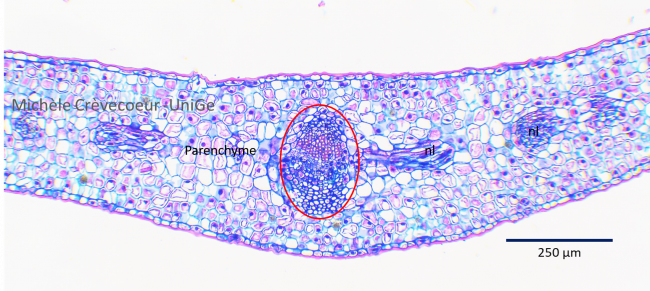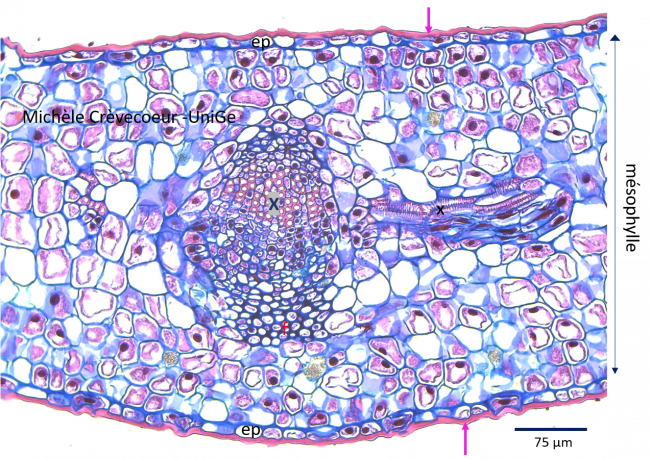Cross section in a leaf of Viscum album (mistletoe).
Viscum album, mistletoe of deciduous trees found primarily in Europa (it can also be found on softwoods) belongs to the family of Santalaceae. It is an evergreen epiphyte that grows on the stem/branches of other species of trees on which it is attached by a swelling called “hausterium”. This structure has two functions: anchoring and absorption. Mistletoe is an hemiparasite which depends on its host for water and mineral nutrients but can photosynthesize owing to its green l(chlorophyll) leaves, creating its own carbohydrates.
Viscum album is native from temperate countries of Europa, but other species exist in the Viscum genus (approximatively 70 to 100 species) in Africa and Australia. It is characterized by intense evapotranspiration, that is essential to maintain a gradient of pressure to absorb water from the host tree. Leaves are slightly fleshy, oval to oblong without a true petiole and with 5 to 6 six parallel veins, a rare characteristic of dicotyledons, and disposed in opposite pairs at extremity of branches.
The name Viscum originates from Latin « viscum » referring to the sticky liquid contained in the berries and bark of this species.
Below: two micrographs of a paraffin cross section in a leaf. The section has been stained with safranin and alcian blue.
Upper section: illustration of the general aspect of the section with the midrib in the red circle (x: xylem).
Bottom section : higher magnification of the section.
The mesophyll is homogeneous and the epidermis (ep) of the two leaf faces have a relatively thick cuticle (pink arrows) related to the leathery leaf morphology.

